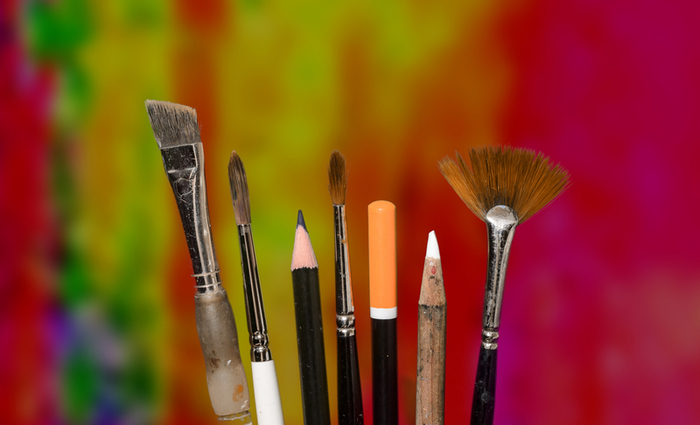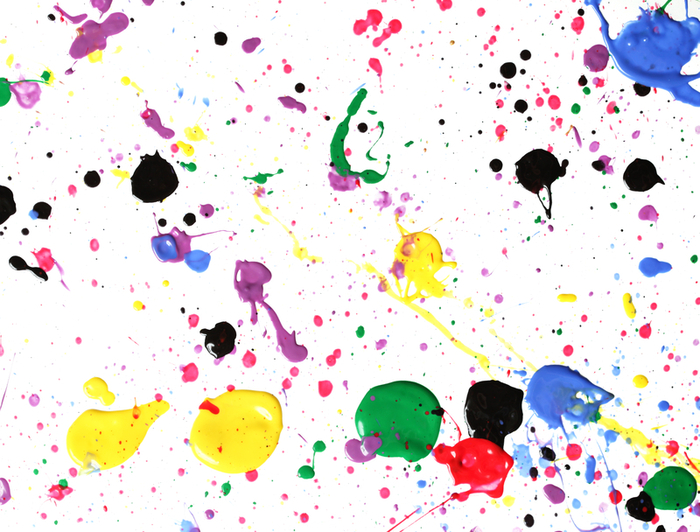- Calls to this hotline are currently being directed to Within Health, Fay or Eating Disorder Solutions
- Representatives are standing by 24/7 to help answer your questions
- All calls are confidential and HIPAA compliant
- There is no obligation or cost to call
- Eating Disorder Hope does not receive any commissions or fees dependent upon which provider you select
- Additional treatment providers are located on our directory or samhsa.gov
Art Therapy for Eating Disorders
There are numerous treatment approaches for eating disorders. Art therapy for eating disorders is used in treatment as a way to work through emotional issues and move closer to recovery.
What is Art Therapy?
Art therapy is a form of psychotherapy. It is different than an art class, in that art therapy is used to treat mental health and emotional issues.
According to the Art Therapy Credentials Board (ATCB), art therapy is a form of therapy “that uses art media, the creative process, and the resulting artwork as a therapeutic and healing process” [1].
Who Can Provide Art Therapy?
Art therapists are trained in both art and therapy. Art therapists use their knowledge of counseling, human development, and psychology to provide mental health treatment [1]. An art therapist has at least a master’s degree. These clinicians are also required to abide by certain professional standards that the Art Therapy Credentials Board has established.
Art Therapy and Eating Disorders
Eating disorders are complex diagnoses. These conditions are both emotional and medical, in that disordered eating impacts someone’s mental and physical health.
There may be shared goals for each person in eating disorder treatment. Some shared goals may include developing healthy eating patterns or maintaining a stable weight.
However, in treating eating disorders it’s important to recognize the unique factors that may contribute to each individual’s eating disorder. For example, one person may use an eating disorder to cope with anxiety, while another person may struggle with disordered eating because trauma has impacted their relationship with their body.
Art therapy should be tailored for each individual. However, there tends to be common emotional struggles in people with disordered eating. Some examples include finding it difficult to identify feelings, perfectionism, or rigid thinking patterns [2].
Art therapy interventions aim to help people work towards accomplishing their treatment goals and finding long-lasting wellness.

Eating Disorder Art Therapy Activities and Exercises
There’s an endless amount of art therapy activities and exercises that can be used for eating disorder treatment. Some examples are:
- Drawing the Feelings: People with eating disorders often struggle to figure out what they’re feeling and how to cope or express their emotions. An art therapy technique that aims to help with this is to draw the feelings using lines, colors, or shapes [2]. An art therapist may follow this up with a conversation about the feelings themselves. This can open up a deeper conversation about emotions than may have been possible had it just been a verbally discussed.
- Splatter Painting: The splatter painting technique is used to help people with eating disorders reconnect with their bodies. Clients are provided with materials to make a large painting using their whole body [2]. This technique also helps people become more mentally flexible. People with eating disorders tend to feel anxious if they feel out of control. Making art that feels less controlled can help with this [2].
Art therapist Dena Barnes uses art directives with her clients who are seeking therapy for eating disorders [3]. Some of the art therapy techniques Barnes uses include:
- Enhancing Self-acceptance: This activity involves identifying a part of your body that you appreciate or like about yourself. Then, write a love letter to that part. Create a visual of you using this part of your body. Next, identify a part of your body that you don’t like. Repeat the same steps. Think about how you can feel grateful for this body part.
- Challenging Negative Belief Systems: This intervention helps build insight into how an eating disorder can negatively impact you. It’s very common in the beginning of treatment to believe that the eating disorder is a helpful coping skill. By creating a visual that represents this belief and then comparing it to a visual that represents the real impact it’s had on your life, there is an opportunity to see the eating disorder clearly. This can help in sorting through negative beliefs that keep the eating disorder in place.
Art Therapy, the Brain, and the Unconscious
Neuroscience is an emerging field that has implications for mental health treatment. Neuroscience is the science and study of the nervous system and brain. Some neuroscience research focuses on implicit memory.
Implicit memory is a form of long-term memory that is automatic and unconscious [4]. The ability to form memories is available to us as infants and continues throughout life.
Our experiences in infancy and early childhood can drastically shape our beliefs of ourselves, others, and the world [4]. Implicit memory is essentially a blueprint for how we believe the world to be.
The tricky thing about implicit memory is that we may not even be aware of what our blueprint is, yet we’re acting off of it. One common example of implicit memory is that once you learn to ride a bike, it becomes a deeply-rooted knowledge that you don’t need to continue re-learning.
For people with eating disorders, there may be implicit memories that contribute to their relationship with food and their body. Art therapy is a unique way to work with and shift unconscious beliefs that are influencing someone’s life [5].
Art therapy can access someone’s unconscious beliefs by accessing the part of the brain that stores these experiences [4]. This approach may allow someone to work through emotions that they wouldn’t have been able to if they didn’t access this part of their mind.
Implementing Art Therapy in Eating Disorder Recovery
There are a few ways that art therapy can be integrated into eating disorder recovery. Here are some ideas on how this modality can be implemented:
- Group therapy: Some treatment centers include group therapy as part of the treatment process. Group therapy is a form of therapy that allows for people to give and receive feedback from peers who are also in eating disorder treatment. Art therapy groups can support deeper emotional processing, while fostering more authentic connection among group members.
- Individual art therapy sessions: Art therapy can also be done one-on-one with a therapist and client. Someone may have an individual therapist they do traditional therapy with and also have an art therapist. It’s also possible that someone sees only one individual therapist and that art therapy is woven into the therapy process.
If you’re interested in art therapy, you can use the Art Therapy Credentials Board database to search for an art therapist in your area.
Articles on Eating Disorder Treatment Therapies
- Eating Disorders Therapy
- Acceptance Commitment Therapy (ACT)
- Cognitive Behavioral Therapy (CBT)
- Dialectical Behavioral Therapy (DBT)
- Exposure Response Prevention Therapy (ERP)
- Eye Movement Desensitization Reprocessing (EMDR)
- Interpersonal Psychotherapy (IPT)
- Family-Based Therapy
- Maudsley Method
- Medical Nutrition Therapy (MNT)
- Somatic Experiencing
- Body Movement Dance Therapy
- Equine Therapy
- Alternative Methods Stand Up Paddle Board Yoga
Resources:
[1] Art Therapy Credentials Board, Inc. (n.d). What is Art Therapy? https://www.atcb.org/what-is-art-therapy/ [2] Brooke, S. (2008). The creative therapies and eating disorders. Springfield, IL: Charles C. Thomas Publisher, Ltd. [3] D. Barnes, personal communication, January 4th, 2022. [4] Vöhringer, I.A., Kolling, T., Graf, F., Poloczek, S., Freitag, C., Suhrke, J., Teubert, M., Lohaus, A., Knopf, M., Fassbender, I., Lamm, B., Teiser, J., Keller, H., Schwarzer, G. (2018). The development of implicit memory from infancy to childhood: On average performance levels and inter individual differences. Child Development, 89(2), 370-382. [5] Malchiodi, C. (Ed.) (2003). Handbook of art therapy. New York, NY: The Guilford Press.Author: Samantha Bothwell, LMFT
Page Last Reviewed on March 2, 2022 and Updated By: Jacquelyn Ekern, MS, LPC


